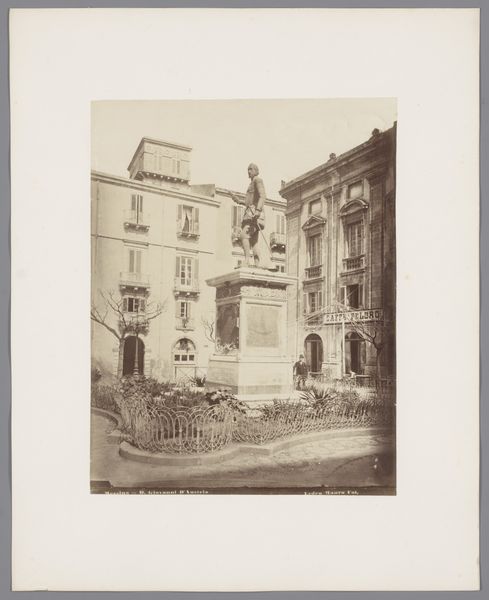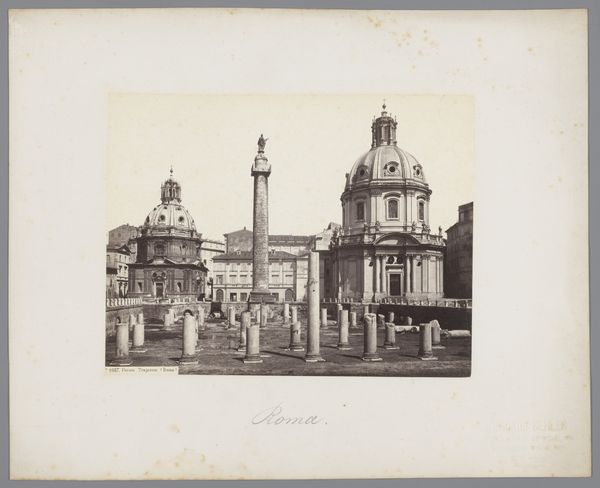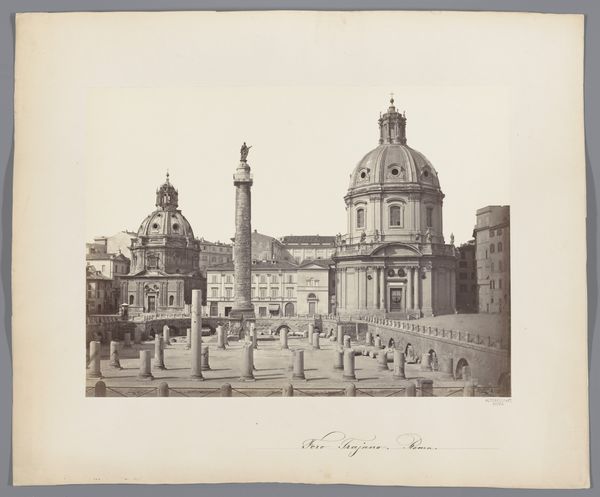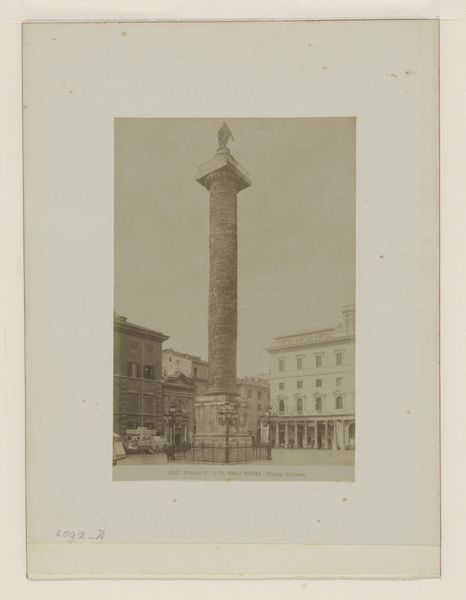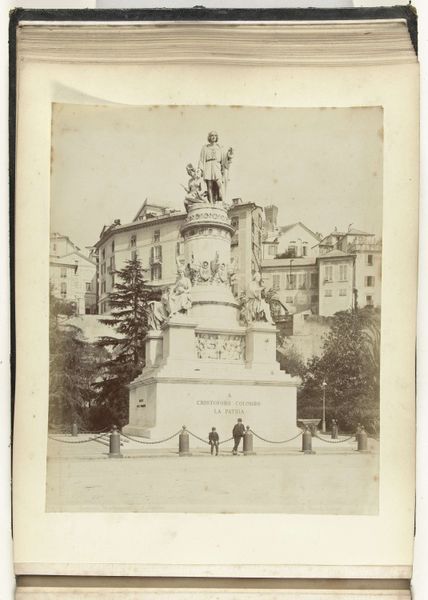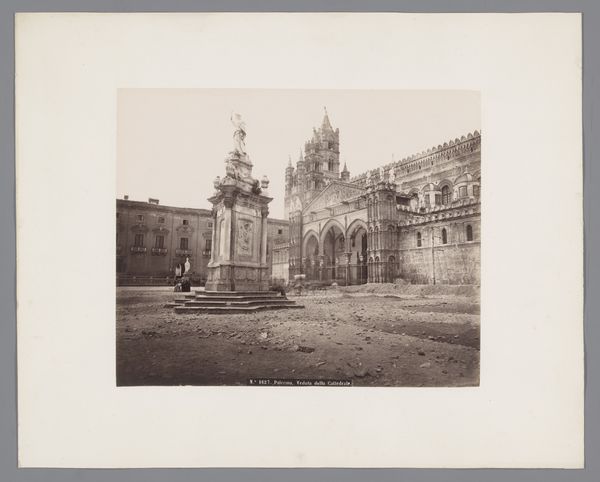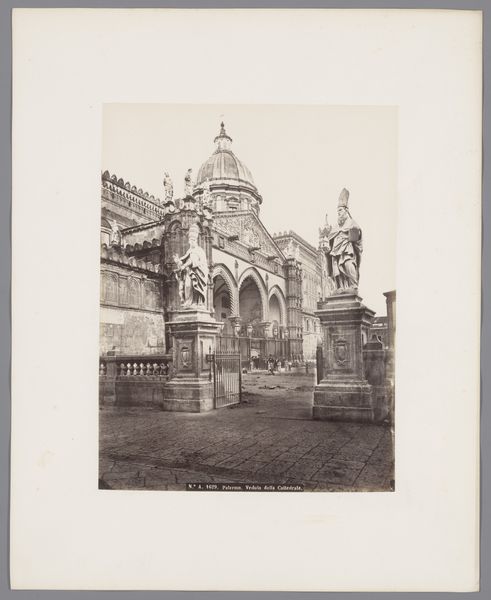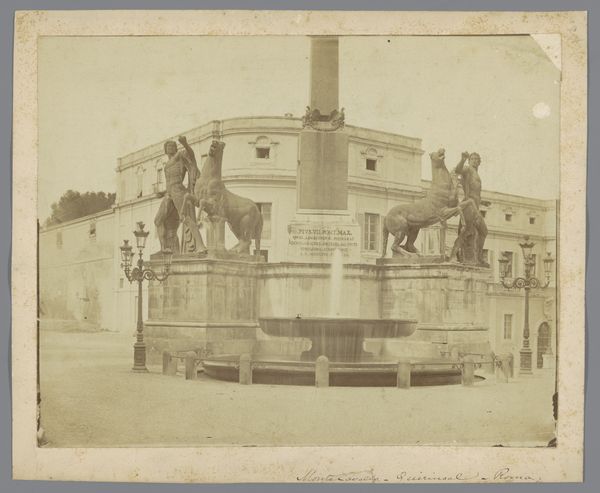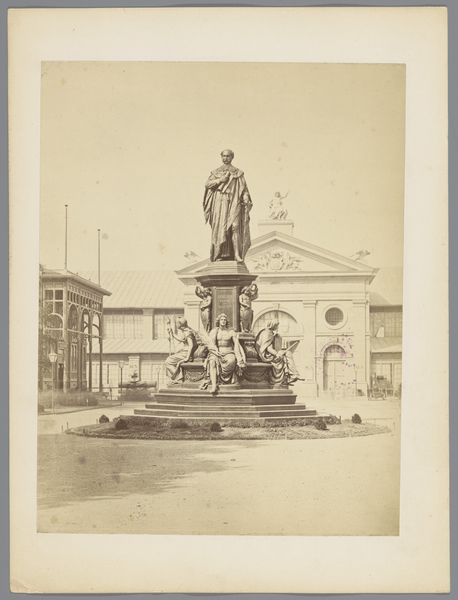
photography, gelatin-silver-print
#
toned paper
#
muted colour palette
#
landscape
#
photography
#
historical photography
#
gelatin-silver-print
#
cityscape
#
italian-renaissance
#
realism
#
monochrome
Dimensions: height 261 mm, width 195 mm
Copyright: Rijks Museum: Open Domain
Curator: This photograph, attributed to R. Peli and likely taken between 1870 and 1890, offers us a "View of the Column and Tomb in Piazza San Domenico in Bologna." It’s a gelatin silver print, showcasing a cityscape steeped in Italian Renaissance history. Editor: There's a stark stillness to it, a hushed reverence. The muted colours contribute to a sense of timelessness, as if this piazza exists outside the flow of everyday life. It feels less like a snapshot and more like a carefully constructed stage set. Curator: I agree. Peli's framing directs our attention towards the towering column, topped with a saint. Notice how the photographer employs symmetry, arranging architectural elements on either side. It feels calculated to evoke the grandeur and enduring legacy of the place. What kind of emotional impact does it leave on you? Editor: The photograph makes me consider pillars and columns as assertive declarations of authority and resilience, both secular and sacred. The statue at the top is quite obscured; but its position over the plaza is really what grants it symbolic authority. You get this powerful intersection of religious and civic pride, almost radiating out into the surroundings. Curator: It's fascinating how gelatin silver prints from this period could capture such architectural detail. And the fact that Peli opted for what appears to be toned paper further emphasizes the antiquated and classic feel of Bologna at the time. Editor: Indeed. Plus, the choice to use a monochromatic palette invites reflection upon what has remained over the years—what has become faded with age—versus what continues to rise above. Curator: It’s as though we're given a portal into a different era. One thing is for certain. Peli allows us to peer across history into this grand Bolognese piazza through their photograph. Editor: I am drawn in by what these icons might express regarding a community's identity, desires, and myths about its beginnings—rendered with muted hues, it provides an eerie feeling and perhaps speaks about cultural memory, trauma, or suppressed histories.
Comments
No comments
Be the first to comment and join the conversation on the ultimate creative platform.

